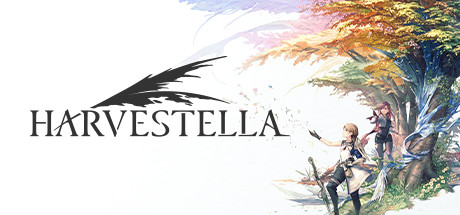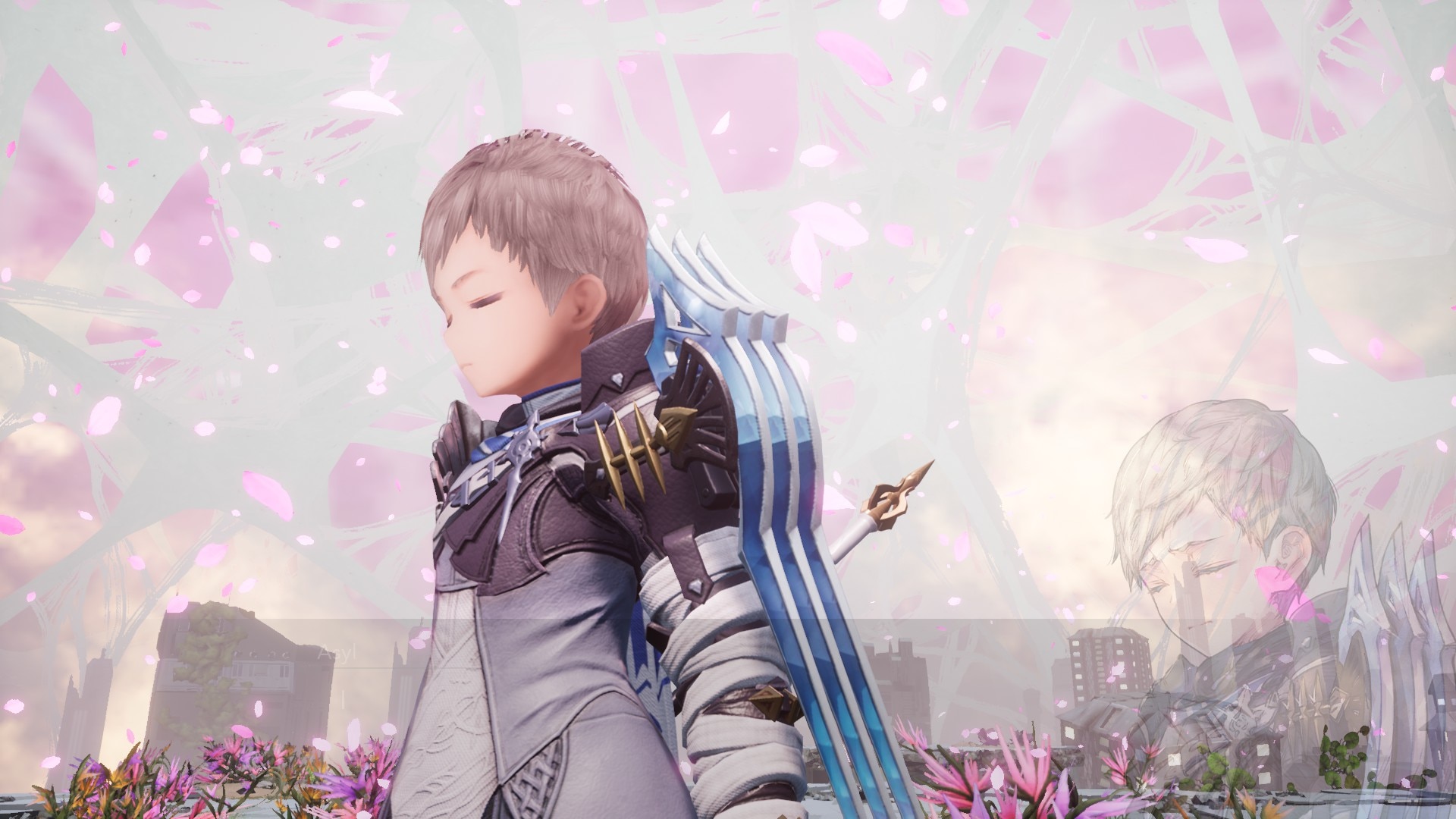
Harvestella
Harvestella is a one-of-a-kind blend between a farming sim, a JRPG and a story-rich adventure. I absolutely love the game, not only because it takes the best aspects of all these genres and smoothly combines them into a deeply immersive experience, but also because the mechanics commonly encountered in these games have been vastly improved to offer the most comfort to the player as possible.

Story
First of all, Harvestella’s narrative is heavy, engrossing and very complex. Going through the main story will be your main focus for the first 50h-70h. Of those, roughly half will be spent on cutscenes and character interactions that unravel the mystery of the plot bit by bit. These numbers might sound a bit scary for those that don’t enjoy reading, but in fact, the story sequences usually take only a couple of minutes and are immediately followed by a lengthier action sequence where, for instance, your party will clear one level of a multi-level dungeon. There’s a perfect balance between story progression and action segments, neither of them being too long or too short – they’re timed just right to keep the player fully immersed in the story, yet giving them a change of pace every so often.

In regards to what exactly the plot is, it’s advisable to avoid any kind of spoilers. It’s a sci-fi story that revolves around a mysterious event named Quietus which occurs for one day when the seasons change. During this time, deadly dust fills the air causing all crops to wither and preventing people from wandering outside their homes. Your main character’s efforts will be focused on understanding why this phenomenon happens. However, this is just the tip of the iceberg, and the story’ twists and turns will absolutely blow your mind. Even if you can start theorizing mid-way through the game, the conclusion of the story is far from anything you’d imagine or anticipate.

Farming
The farming aspect will be rather secondary while you progress through the story. You’ll get to do farming-related activities likely in the morning, before setting out on the daily adventures. These are mostly meant to provide you with the materials needed to craft food and beverages that replenish your health and stamina during battles, as well as some income that will allow you to upgrade your character. A really nice aspect is that besides the main farming area that you can expand many times, there are also two additional farming biomes that you can unlock and which don’t need watering: one is on a small lake, and the other one is in a cave, each of them being used for specific types of crops.

While I do love all kinds of farming Sims and did play many of them, until now I haven’t encountered any game that doesn’t trigger any of my pet peeves. Somehow none of these more-or-less annoying features were present in Harvestella: everything that bothered me in the slightest in other games was implemented here exactly as I wished them to be all along.
If you’re like me and you hate going to the lake every five crops to refill your watering can, then you’ll be happy to know that there’s no such thing in Harvestella: your weapon functions as a hose, there’s no refill needed and it has an infinite charge (as long as you have stamina). If you also dislike boring and / or timed fishing minigames, then rejoice: fishing in Harvestella only requires you to wait a few seconds until the fish bites and there’s no other minigame mechanic involved (these are fun to play the first few times, but when you have to repeat them hundreds of times it becomes too redundant).

Do you hate having to manage dozens of different chests, each of them specialized for one type of resource? Harvestella uses general storage, which has an infinite amount of slots, and which can be accessed from all zones of your property. You can also easily filter its contents per resource type. Additionally, you’re not required to hold the crafting materials in your inventory – the main crafting stations access the global storage automatically.
One other thing that I hate in these games is not knowing how many items of one type I have in storage when I want to buy something or place something in the shipping box for next-day pickup. In Harvestella this info is always displayed when you highlight an item (storage quantities, as well as backpack quantities), plus other useful information about the item (planting seasons, days to mature, buffs, etc.), saving you lots of time and frustration. An encyclopedia that is filled with all types of enemies, crops, fish, etc. as you discover them is also available from the character menu at any time.

The backpack size is always a struggle for me in these games – it never seems big enough to hold everything I need, and I usually go for backpack upgrades as soon as possible. In Harvestella though, even if there are dozens of possible drops (even two value tiers for each of the farm products), they are so well area-contained that in over 80h of playtime, it happened only once or twice that I couldn’t pick up the loot due to the backpack being full, and that was because I forgot to clear it out after the morning harvest. The above-listed improvements are just a few among many others that Harvestella offers, too many to list all of them here.
Battle system
As part of the story progression, you will get to meet several characters with similar goals to yours. You will join forces and build rapport with them, while also exploring their individual stories. They each have a unique class (called “Job”) with a different playstyle, spell arsenal / abilities and party buffs. You choose two of them to accompany you into dungeons, based on what abilities you think would help. You can neither permanently lose them, nor does the game force you to bring each in turn just to complete their questlines. As soon as a character joins your party, you will be able to start learning their Job. You can bring up to three of these classes into battle and switch between them in combat. Each Job has its own talent tree through which you unlock and upgrade its four abilities, using experience points gained from bringing that particular Job into fights. The relative simplicity of these classes and the lack of branching makes it easy to keep track of everything without getting lost in a complex skill tree or a maze of button mapping.

Part of the gameplay is figuring out what weaknesses enemies have, and subsequently using a suitable Job, so that you can exploit those weaknesses, like in other classic JRPGs. The combat is overall extremely casual and the enemies can be killed easily without paying too much attention to these weaknesses, but bosses or elite mobs will require more attention on your part and you’ll notice that not using their weaknesses to your advantage will only result in the fight taking much much longer than normal or even in your inability to kill the enemy.

Regardless of whether you use combat abilities or perform basic actions like farming / fishing, these will all consume some stamina. However, compared to other similar games, the stamina bar automatically refills over time as long as you previously have eaten something. This hunger mechanic is very satisfying because it essentially gives you infinite stamina at the cost of a small meal in the morning (which is very easy to craft) or a simple mushroom / blueberry that you loot from almost anywhere you go, allowing you to freely do as many activities as you want during the day. In battles though, you will need to consume food more often than that (and more substantial meals) to replenish your health. What I find particularly nice is that eating or drinking will replenish your party’s shared stamina and each member’s health bar.
Graphics
Every environment is absolutely stunning. The dungeons have unique biomes, one more breathtaking than the other. They range from green hills, autumnal forests, fantasy settings, and icy caves to more futuristic or post-apocalyptic ones such as a research facility or an abandoned amusement park. There is simply no location that didn’t make me gasp in awe at its beauty and at the amount of detail put into designing it. I also love the fact that the enemies are scattered rather loosely, not only to allow your stamina to regenerate in-between fights, but also to provide enough time to explore the area and take its astonishing visuals in.

Soundtrack
With a renowned composer such as Go Shiina (who also worked on memorable tracks from Code Vein, God Eater, Tales of Zestiria, etc), it’s no wonder that the OST is a masterpiece. Whether it’s an animated soundtrack used for battle sequences, a deeply meditative zen song heard during Quietus and which can calm even the most agitated minds, a relaxing tune played while farming or exploring, a sad medley, an emotional orchestral piece that mimics a siren’s song, or a haunting requiem, the songs are simply impactful and unforgettable – they are bound to move you to the core. Harvestella’s soundtrack is simply the best I’ve heard in years – absolutely fantastic.

Conclusion
The steep $60 price could make some hesitate, but in my opinion, it’s totally worth it, more so if you can pick it up with a discount. For me it was by far the best purchase I’ve made in the past years. It surpassed any game that managed to become my #1 favorite in the meantime, by a long shot. It’s just extremely hard to describe how much I adore Harvestella in all aspects and how much enjoyment I derived from it. Even after the story is completed, there is still a lot of content to explore and many farming-related things or side quests to do – if not for completionism purposes, then at least for lingering in this magnificent universe for a bit longer.
